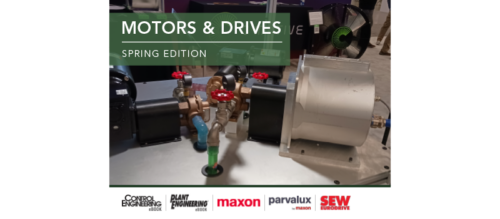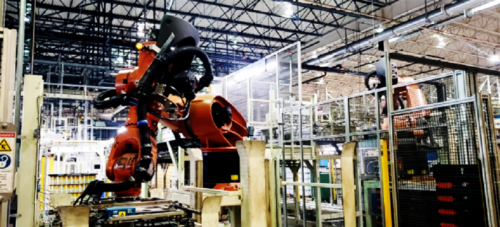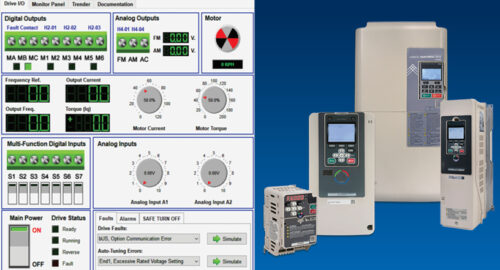Staying Ahead of the Curve: Five trends in mechatronics
First in a series of articles on automation's evolution
Pioneered in automotive manufacturing plants, control automation technologies have made significant headway into many other industries. Automated systems optimize space and productivity, performing tasks that otherwise require extensive manual labor, such as equipment assembly, loading and unloading, picking and palletizing.
Increased need for automation in broader applications has spurred demand for smarter, more efficient drives, controls, and software tools. The mechatronics approach results in machines and systems that address operational needs while being easier to integrate and maintain. Managing the process and recognizing mechatronic trends are keys to staying ahead of the technology curve.
1: Evolving standards
Industry-wide automation system standards have vastly improved machine programming consistency. The most widely influential are the ISA standards, which strive to achieve total integration within the industry so users have better and more flexible equipment and software choices. ISA-88 defined terminology and models for batch control in the automation of machines and devices. The international standard for integrating enterprise and control systems, ISA-95, provided hierarchal and modular standards for the exchange of information between ERP and MES systems.
Founded in 1994 to identify and define solutions to enable open architecture systems, OMAC (Organization for Machine Automation and Control) brings together manufacturers to share best practices and outline strategies for improving production operations. OMAC’s working groups for the packaging and machine tool industries have produced specific guidelines relevant to using automation for greater efficiency and productivity.
Although not technically a standard, CoDeSys has emerged among best practice tools for programming controller applications in compliance with international industrial standard IEC 61131-3. Developed by German-based 3S-Smart Software Solutions, CoDeSys is a free licensed development software tool that deals with PLC programming language standards.
These standards and tools have been most instrumental in mitigating system integration issues, including inconsistencies in mode control and error reactions, commonly associated with proprietary program development. By advancing open system architectures through industry standardization, machine builders can focus on their core technology.
2: Impact of modular code
Programming modular code presents unique design challenges. For every machine task, a distinct corresponding code does not exist. Programming code requires expertise in both motion control and the specific tasks needed to be accomplished. Modular programming has gained traction in automation control by providing software design modules that conceptually represent desired machine tasks.
Application templates and ready-made standard software modules support machine builders in efficiently creating modular control software. And, technologies exist that can quickly and reliably handle most of the engineering requirements for standardized machine modules.
Consider that about 80% or more of new machine tasks reflect some variation of past machine tasks. So, software for a new machine can be generated much more quickly using code developed for previous generations of machines in the form of these ready-made technology modules, which can be modified to meet any new requirements.
Use of modular code programming relies on a control system and modular hardware, but the impact in terms of reducing machine design resources is phenomenal. This offers the machine designer greater freedom to devise and test special features of a machine to better meet end-user needs and provide purchasing incentives for prospective customers.
An application template provides the necessary basic structures while allowing users to create their own machine modules. Software modules created using application templates can then be put together like bricks with minimal effort, creating complete systems that are customizable and reusable.
Reused tested modules further reduce costs, allowing for new refinements and error reduction with each iteration. Standard machine software modules, for example, might include modules for feeding, unwinding, sealing, cross-sealing, and discharging.
3: Integrated hardware sets
Machine design by definition is customized to the requirements of a given task or set of tasks. Whether optimizing an existing machine, developing a new machine, or designing a complete end-to-end automation system, successful execution requires that today’s machines handle more extensive motion control tasks with greater speed than in the past. The field is constantly evolving, so it pays to leverage the best tools and technologies on the market.
In drafting automation concepts, the approach should be to “let the machine decide.” Whether an automation system for central (controller-based) or decentralized (drive-based) motion control from a single source, the individual system elements should be optimally matched to one another, while meeting the highest quality and efficiency standards.
To optimize motion control efficiency and achieve scalability through precision performance matched components, it’s important to ensure the right gear box, pairing the right motor and drive. Equipped with options that may include L-force control and software, memory modules, online diagnostics, and integrated safety systems, scaled lines of frequency inverters enable the exact matching of speed and torque requirements.
Whether it’s continuous positioning tasks, pick and place, storage and retrieval, rotary and lifting, or material handling and conveying systems, it is important to ensure optimal motor voltage and operational efficiency.
Synchronization at the hardware level enables seamless integration of high dynamic drives. The latest inverter drives on the market offer improved functionality for motion control including automatic axis bus to enable easy construction of direct and cascade configurations. This optimizes the bus bandwidth through synchronization at the hardware level.
While technology convergence is perhaps most demonstrable at the hardware level, with leading vendors developing hardware modules, simply linking hardware is insufficient to optimize performance efficiencies.
The challenge remains to dovetail hardware sets that require parameterization at multiple levels, such as between a motor and drive, drive to controller, controller to HMI, etc. Modularization requires a modularized development environment. Drive solution design tools can simplify the process of drive dimensioning and energy optimization.
4: Industrial communications
The industry is trending toward high-speed field bus data rates up to a gigabyte. Modular industrial communications protocols are critical to incorporating machine components and ensuring an efficiently networked system. There are multiple open networks with proven performance and reliability in a broad range of industrial applications.
Among those, the AS interface might be considered the easiest approach to industrial networking. InterBus can establish connections quickly in major installations. Widely used DeviceNet creates connections at the field level. ProfiBus is totally universal and suitable for any large machine application. CANOpen offers a fast, easy networking system for multiple components. EtherCAT and ProfiNet used in conjunction with EtherNet provide the most seamless exchange of information on all levels.
The latest inverters on the market are equipped with an onboard field bus (CANOpen or EtherCAT) or may be expanded by adding pluggable communication modules. In that way the user can select and customize solutions using the field bus most suitable to a given application.
Global drive controllers with integrated technology functions offer easy avenues for selecting a preferred technology and configuring it simply by entering a few variables. The inverter, register control, cam profile generator, and positioning control, for example, can each be equipped with a uniform user interface. Such integrated technology functions can form a vital part of an intelligent automated drive solution.
It is worth noting that industrial network communications architecture and hardware platforms can and should be independent decisions based on the best available technologies. The more important decision is selection of a support team and supplier that can offer a powerful “agile software” structure to integrate existing and future system components efficiently and sustainably.
5: The “people challenge”
People are at the core of new innovations in machine building. Machine engineers face rapidly evolving and converging technologies, compounded by stiff competition driving faster times to market for increasingly complex machine designs. Many machine builders and supply partners are turning to mechatronics as a tool for abbreviating the design cycle, while ensuring the best possible machines.
Mechatronics is the synergistic collaboration between mechanical engineering, electrical engineering, and information technology in the design and production of industrial products and processes—or, more simply stated, the convergence of engineering disciplines.
By streamlining the design process, mechatronics translates to better designs with lower total cost of ownership, from implementation to commissioning to maintenance. Mechatronics eliminates traditional engineering silos to reduce inefficiencies. With an ROI that applies to any industry, including packaging, consumer goods, airport baggage handling, automotive, and industrial, the mechatronic approach reduces numerous layers of design and decision-making, while improving machine efficiency.
Chuck Edwards is president of Lenze Americas, a leading global manufacturer of electrical and mechanical drives, motion control, and automation technology.
Do you have experience and expertise with the topics mentioned in this content? You should consider contributing to our CFE Media editorial team and getting the recognition you and your company deserve. Click here to start this process.





